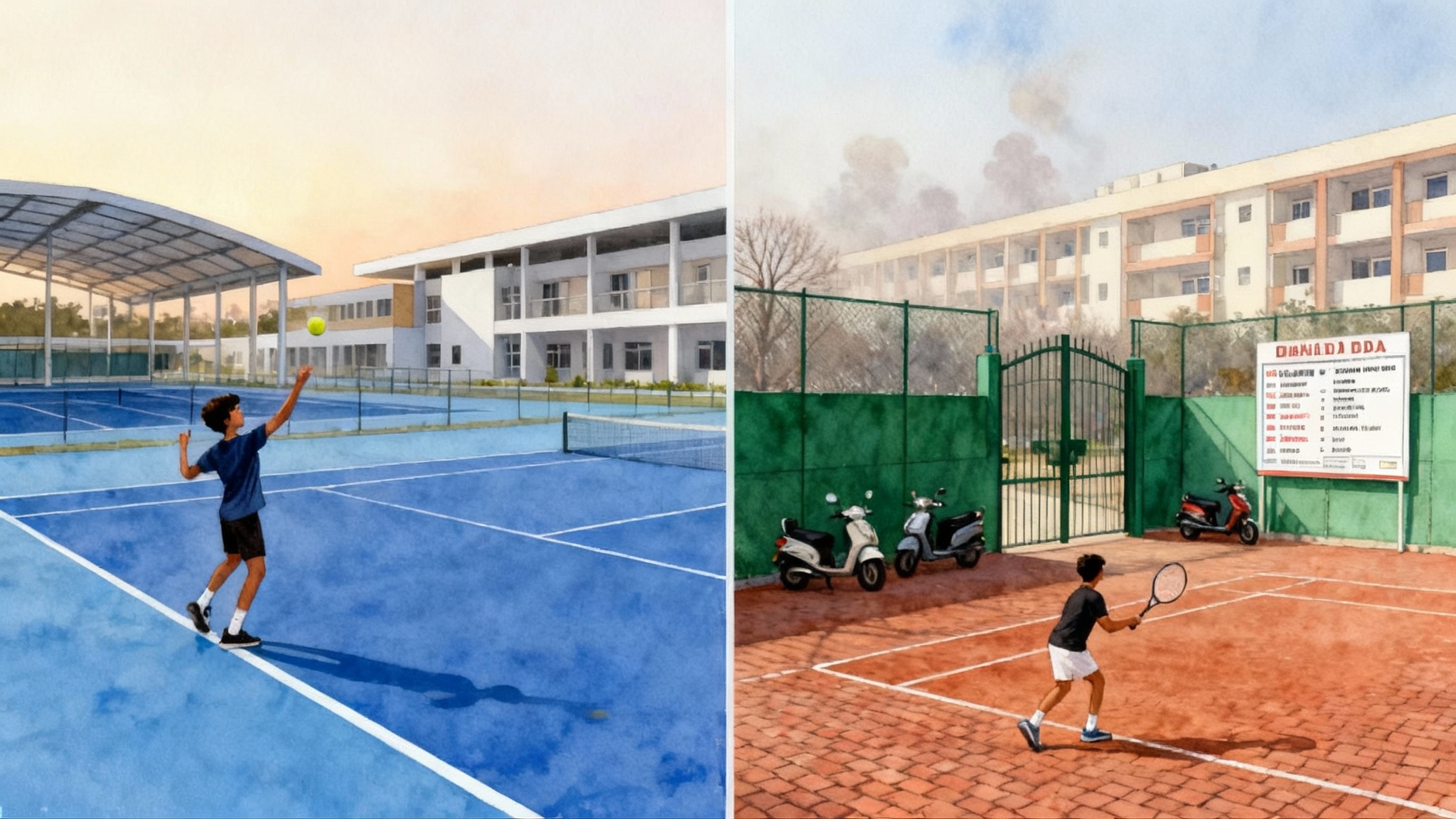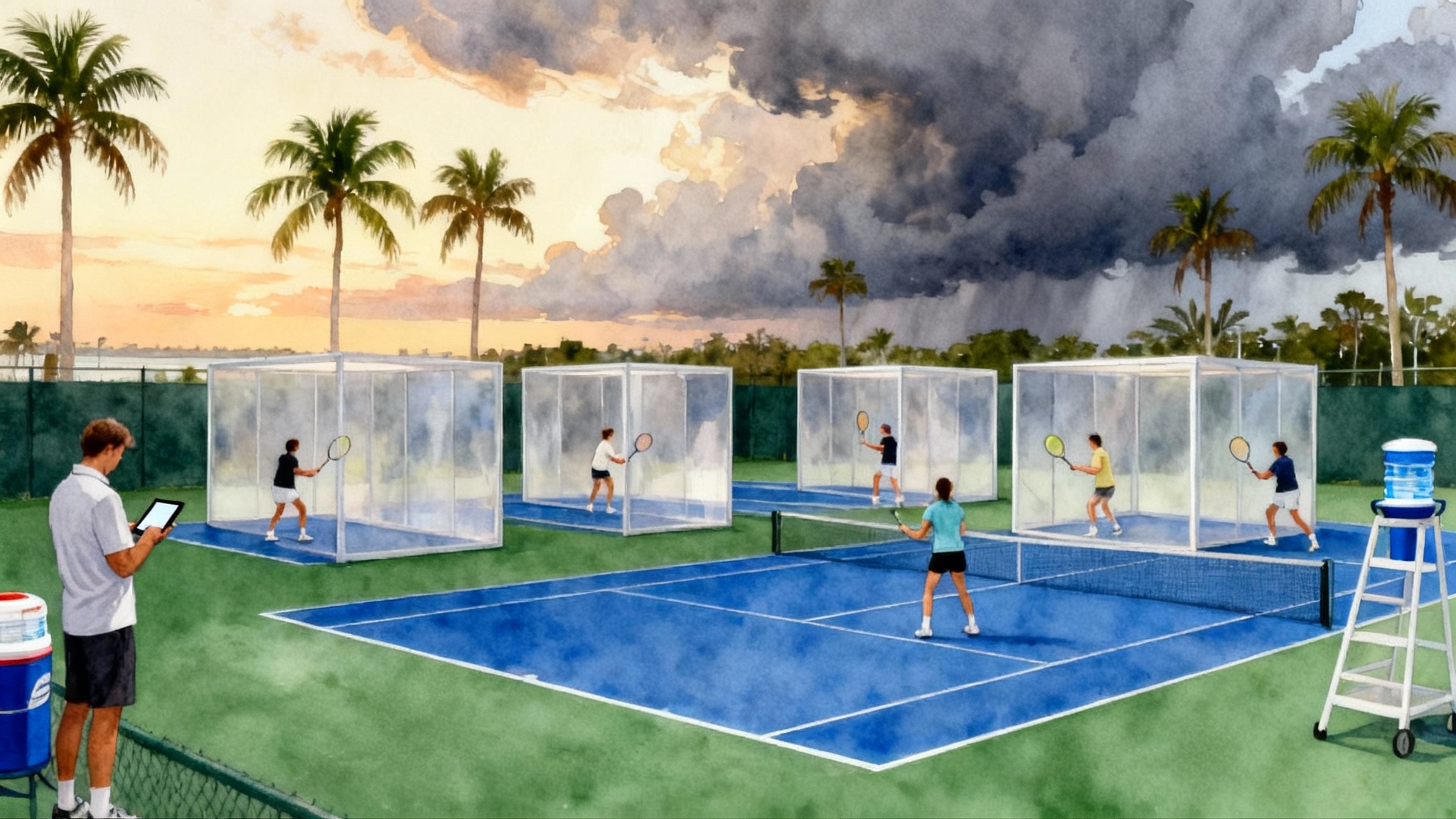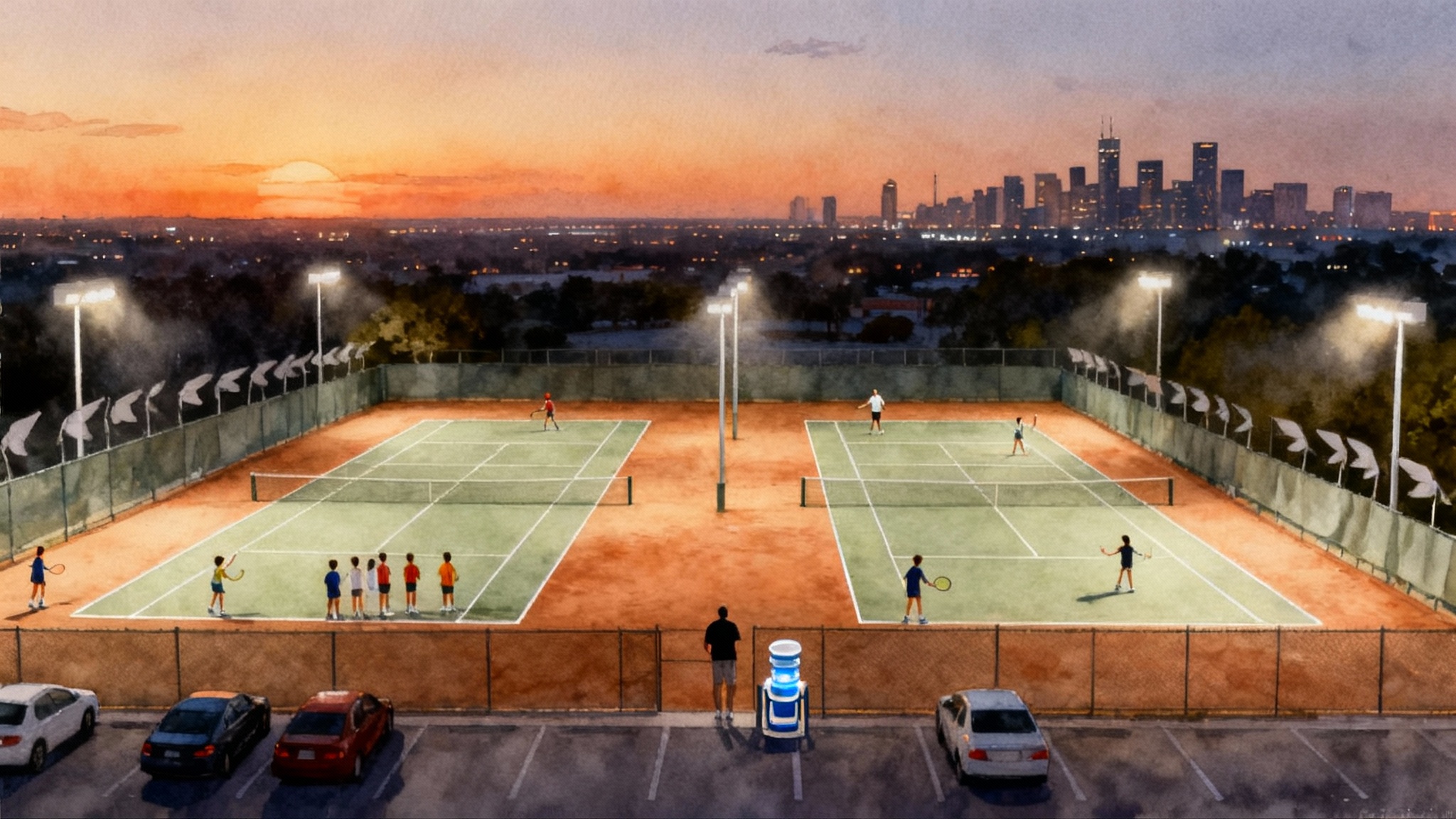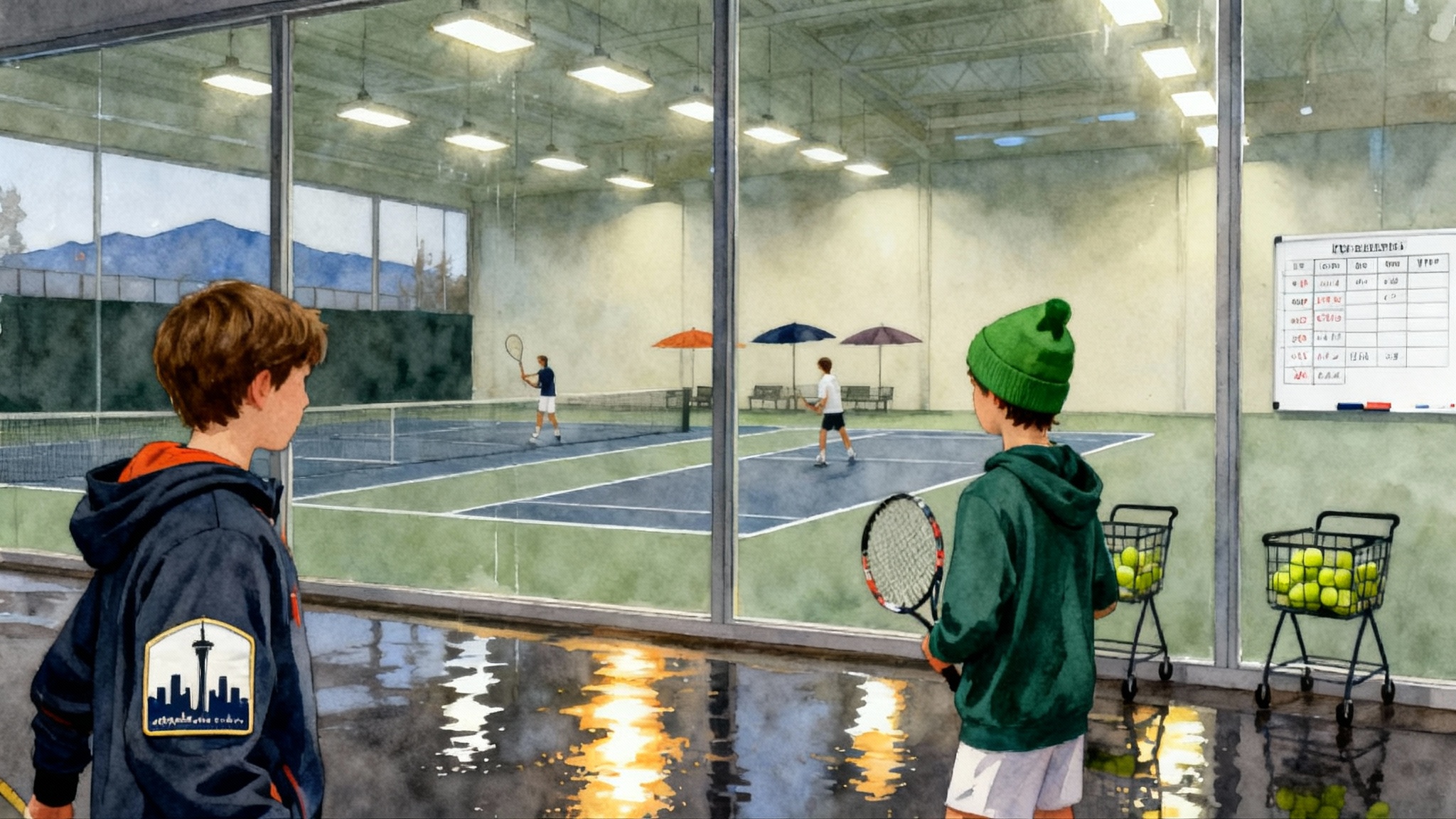2025-2026 Guide: Rafa Nadal Kuwait vs Aspire Qatar for Tennis

Why parents are looking at Kuwait and Qatar in 2025–2026
If your junior is aiming for college tennis in the United States or for professional pathways in the Middle East, the Gulf Cooperation Council has two standout hubs on most shortlists: Rafa Nadal Academy Kuwait in Kuwait City and Aspire Academy in Doha. On paper they both sit inside world class sports districts with climate controlled venues and international events. In practice they serve different families and offer different routes to progress.
This guide is written for parents who need specifics. We compare boarding and academics, how each location solves the summer heat, weekly training volume and sports science support, Universal Tennis Rating match access and International Tennis Federation calendars, travel and visa logistics, languages of instruction, and cost bands and scholarships. We end with clear family personas, a practical checklist, and a 30 day trial plan to pick the right base.
Snapshot: who each academy actually serves
- Aspire Academy is a national high performance school that selects student athletes through Qatar’s talent identification programs. It is not an open enrollment tennis academy and its core sports do not include tennis. Admissions are restricted and not designed for international families to buy a place. See the official wording in the Aspire Academy admissions policy.
- Rafa Nadal Academy Kuwait is a high spec training center embedded in the 360 Kuwait sports complex. It runs year round programs and memberships for local and visiting players. Enrollment is open for training. Academics and boarding are arranged separately by the family.
Rafa Nadal Academy Kuwait in 90 seconds
Think of a roofed sports village attached to a major mall, with dedicated indoor and outdoor tennis courts and a large gym. For a player, this solves the heat versus volume dilemma by letting you schedule meaningful on court work even in July. It is a training base first and foremost. Families typically combine it with a local international school or with online schooling, then add tournament travel in the region.
Facilities headline: 15 tennis courts, indoor and outdoor, plus a 1,500 square meter gym and recovery spaces, with on site coaching that follows the Rafa Nadal methodology. You can review the Rafa Nadal Kuwait facilities overview.
Aspire Academy Qatar in 90 seconds
Aspire operates inside the wider Aspire Zone, which includes the climate controlled Aspire Dome, boarding, classrooms, and laboratories. It is a world class sports school, but it is not a public tennis academy. Tennis training in Doha happens through the Qatar Tennis Federation at the Khalifa International Tennis and Squash Complex and private programs. Families who are not in Aspire’s talent pathway typically mix a mainstream international school, club coaching at Khalifa, and tournament trips. Aspire remains relevant to tennis families because the surrounding ecosystem is exceptional for sports science, medical care, and climate controlled training in other disciplines.
Boarding and academics integration
-
Rafa Nadal Academy Kuwait: No integrated boarding school in Kuwait. The training center is embedded in the 360 Kuwait complex, so visiting families use nearby hotels or short term rentals. Long term residents place their children in local international schools and commute to training. If you want a fully integrated boarding school plus tennis in the Rafa Nadal ecosystem, that exists at the main campus in Manacor, Spain, not in Kuwait. In Kuwait the operational model is flexible club and academy programming.
-
Aspire Academy Qatar: Full academic program with boarding, but only for selected student athletes in its official sports. Families moving to Doha for tennis use international schools near Aspire Zone or West Bay and train at Khalifa Complex or reputable private coaches. The takeaway is simple. Aspire is not a tennis admission route for non selected athletes, but its zone offers a strong support environment if your child trains elsewhere in Doha.
Parent action: If academic integration is non negotiable and you want it in the Middle East, Kuwait will mean a two institution plan. Doha also means a two institution plan unless your child is selected by Aspire in a listed sport.
Training in summer heat: indoor versus outdoor solutions
-
Kuwait: The Nadal facility’s indoor courts let you keep technical blocks, basket drills, and point play at normal hours even in peak summer. Outdoor court time can be stacked at night for match play. For many families this is the single most practical advantage because it protects training volume without 5 a.m. starts.
-
Doha: The city has a climate controlled dome and many indoor halls for other sports. Tennis match play for juniors, however, happens mostly on the outdoor hard courts at Khalifa Complex. Summer schedules slide to early morning and evening, and you use indoor conditioning facilities during the day. Families often periodize June to August as a technical and physical block, then return to heavier match play September through April.
Parent action: Ask each program to show a July weekly schedule and a September weekly schedule. You want to see daylight court slots indoors in Kuwait and a credible early and late split in Doha.
Weekly training volume and sports science
What parents actually buy is not just court hours, it is a coherent week that a teenager can repeat for many months without breakdown. Here is how the two hubs typically structure it.
-
Kuwait base model
- On court: 10 to 14 hours per week for a high performance junior, split across two to three technical days, two live ball and patterns days, and one or two match play blocks. Indoor courts reduce lost time to heat, so you can keep session quality high.
- Support work: 3 to 5 hours of strength and conditioning plus mobility, with recovery sessions. Ask for movement screens and a written progression plan. The academy gym is large enough for teenage athletes and the staff are used to mixing group loads and individual prescriptions.
- Data to request: a weekly report template with ball strike targets, serve volume, and change of direction load, plus plan for tapering before events.
-
Doha base model
- On court: 8 to 12 hours per week when outdoors becomes restrictive, rising to 12 to 16 hours in the cooler months. Many families supplement with early morning indoor fitness at the Aspire Zone and evening hitting at Khalifa.
- Support work: Doha’s strength is access to advanced support services in the Aspire Zone, including sports medicine, biomechanics, and environmental chambers for heat adaptation. Even if you are not in Aspire, you can still assemble a strong support team in the same district on a pay per service basis.
- Data to request: a heat adaptation protocol, a sweat rate test plan, and a clear rule for modifying sessions when Wet Bulb Globe Temperature spikes.
Parent action: Whichever base you choose, ask for a written 12 week mesocycle that shows court hours, gym hours, and recovery blocks week by week. It should include target rep counts for serves and forehands, changes of direction per session, and objective readiness markers.
Match play calendars: UTR and ITF
-
Universal Tennis Rating, explained: UTR is a global rating that rises with match results against rated opponents. Many academies run UTR events weekly so that juniors can log verified matches without waiting for national tournaments. In the Gulf, UTR events cluster in Dubai and Abu Dhabi and pop up in Kuwait and Bahrain. Families based in Kuwait or Doha often stack two day UTR trips to the United Arab Emirates when they want rating movement without long travel.
-
International Tennis Federation events, explained: ITF World Tennis Tour events for adults start at M15 and W15 prize money categories, then step up to M25 and W25, and so on. For juniors, the calendar uses grades such as J60, J100, and J200. In 2025, Doha hosted men’s M15 and M25 events in January and ran a junior J60 in May. Kuwait’s Zahra venue, the district of the 360 Kuwait complex, staged multiple M15 weeks early in the year. The point is not to chase every event. The point is that both hubs give you realistic drive or short flight access to a rolling calendar from January through May and again from September through December.
Parent action: Build a 52 week match map. Anchor it with two to three ITF junior or entry level pro events in the region and fill gaps with UTR weekends within a 90 minute flight. Do not stack more than three competitive weeks in a row for teenagers.
Travel and visa logistics
- Flight access: Kuwait City to Doha is roughly 1 hour 30 minutes nonstop. Both are within 80 minutes of Dubai by air and have frequent connections to Bahrain and Muscat. This makes two day UTR trips and one week ITF trips realistic during school terms.
- Visas: Many nationalities enter Qatar visa free or via an electronic visa process, and Kuwait runs visa waivers and electronic visas for a defined list of nationalities. Rules change, so apply online at least 30 days before your first planned trip and carry invitation letters from the academy and local tournament organizers.
- Guardianship: If one parent must leave for work, carry notarized consent documents for a minor, copies of insurance, and school letters confirming travel windows. These small items reduce airport friction.
Parent action: Price the whole travel basket for a tournament block. Airfare, entry fees, hotel nights, hitting partner fees, and daily transport. It is common for the soft costs to exceed the entry fees several times over.
Language of instruction and daily life
- Kuwait tennis and school: Coaching is delivered mostly in English, with some Spanish influence because of the academy’s heritage. International schools in Kuwait teach in English and add Arabic and other languages as required by the Ministry of Education.
- Doha tennis and school: International schools in Doha teach in English. Aspire Academy itself is bilingual in Arabic and English for its student athletes, but this is relevant only if your child is in its selection pathway. At the Khalifa Complex and private programs, English is the coaching default with Arabic widely spoken.
Parent action: For younger players, sit in on one session to watch how a coach cues technique and uses constraints drills. You are checking that the language matches your child’s learning style.
Cost bands and scholarships
These bands are based on published regional ranges in 2024–2025, quotes gathered by families, and typical invoices for Gulf high performance programs. Treat them as planning numbers. Ask for a written quote for your child’s age and level.
-
Rafa Nadal Academy Kuwait
- Group high performance training: 12,000 to 22,000 United States dollars per year for 10 to 14 hours per week in term time. Summer intensives price separately.
- Private lessons: 80 to 150 United States dollars per hour depending on coach seniority.
- Strength and conditioning: 3,000 to 6,000 United States dollars per year if billed as a separate plan.
- Schooling: 8,000 to 18,000 United States dollars per year for international schools in Kuwait, paid directly to the school.
- Scholarships: Limited and competitive. Priority tends to go to promising locally based players. Ask about trial blocks that reduce private lesson costs and about regional sponsor partnerships.
-
Doha route around Aspire
- Club or private academy training at Khalifa: 10,000 to 18,000 United States dollars per year for 8 to 12 weekly on court hours during the school year.
- Private lessons: 80 to 140 United States dollars per hour.
- Strength and conditioning and sports science: 3,000 to 8,000 United States dollars per year depending on how much you use Aspire Zone services and testing.
- Schooling: 10,000 to 24,000 United States dollars per year for international schools in Doha, paid directly to the school.
- Scholarships: Qatar’s federation and national pathways support Qatari players, often by funding training blocks and international trips. For non nationals, partial sponsorships are rare. The cost control lever is planning your calendar to reduce travel peaks.
Note on Aspire Academy: Aspire scholarships are for selected athletes in its core sports and are not a public fee based option for tennis. That is why families pursuing tennis build their own package in Doha rather than applying to Aspire for tennis.
Parent personas: who fits where
- Persona A: The heat proof grinder. Your child thrives on structured volume and needs midday court time in July and August without losing technical quality. You want tight control of weekly hours and recovery. Kuwait’s indoor courts and big gym give you that.
- Persona B: The science seeker. Your child benefits from environmental testing, biomechanics consults, and a deep medical bench for long term projects. You will train tennis at Khalifa and use Aspire Zone services for the lab work. Doha fits.
- Persona C: The tournament commuter. Your child needs regular match play and can handle frequent short flights. Both hubs work, but Kuwait’s location and indoor base make it slightly easier to avoid summer dips in preparation before a United Arab Emirates or Bahrain weekend.
- Persona D: The integrated boarding hunter. You want a true tennis boarding school in the Rafa Nadal system. Kuwait is not designed for that. Consider Kuwait for training blocks and look to the Manacor campus in Spain for integrated boarding.
A practical checklist to use with both options
- Program design: Ask for a sample 12 week mesocycle that includes total weekly court hours, serve counts, and change of direction loads.
- Coaching ratios: Maximum players per court in peak hours, plus a list of who delivers private work for your age group.
- Heat protocol: Indoor court allocation in Kuwait from June to September, and in Doha the schedule split for dawn and evening court time and how midday is used for gym and video work.
- Sports science: What screening is standard in the first month and how often progress checks run. Ask for the actual report template.
- Match play: UTR event frequency within 90 minutes by air and how staff help with entries. ITF target events for the next six months.
- Schooling plan: In Kuwait and Doha, the list of trusted international schools and how training schedules align with school day timetables.
- Travel proofing: Who handles entry letters for visas and tournament accreditation. Typical turnaround times.
- Costs: All in monthly cash flow that includes training, private sessions, gym, and a conservative tournament travel budget. Ask for a ceiling figure per month.
- Exit routes: College placement history or, for advanced juniors, how the program supports transitions to Futures and Challengers.
A 30 day trial plan to choose your base
- Days 1 to 7: Remote prep. Share match video, fitness test results, and an injury history one pager with both programs. Ask each for a 4 week block plan with targets for serve percentage, backhand errors per set, and aerobic minutes per week.
- Days 8 to 14: Kuwait trial. Fly in for 6 to 8 sessions, mix two private lessons with four group sessions, and one indoor match play evening. Do one gym assessment. Confirm what July and September weeks would look like for school day schedules.
- Days 15 to 21: Doha trial. Book three to four hitting sessions at Khalifa, one to two private lessons, and a strength and conditioning assessment in Aspire Zone. If a UTR or club match day is running, enter it and track rating movement.
- Days 22 to 26: Compare the data. Use the same template for both stops. Note coach feedback, session intensity ratings from your child, serve and error counts, heart rate recovery, and commute time from your preferred schools.
- Days 27 to 30: Decide and book. Secure a 12 week block wherever the weekly plan felt more repeatable and where match play felt more accessible. Book school interviews and pencil in two UTR weekends and one ITF target week in the first three months.
Final word
Kuwait and Doha are excellent training ecosystems, but they solve different problems. Rafa Nadal Academy Kuwait gives you weather proof court time and a clear, open enrollment training base that you can plug into an international school. Aspire Academy is a selective national sports school whose zone lifts the city’s overall sports science and training infrastructure, but it is not a tennis enrollment route for international families. If you keep your eyes on weekly volume that a teenager can sustain, match access within a short flight, and a school day that actually fits the calendar, your choice becomes straightforward.
Related reading: If Spain is in the mix, compare models in our Emilio Sánchez vs Ciudad de la Raqueta guide.








